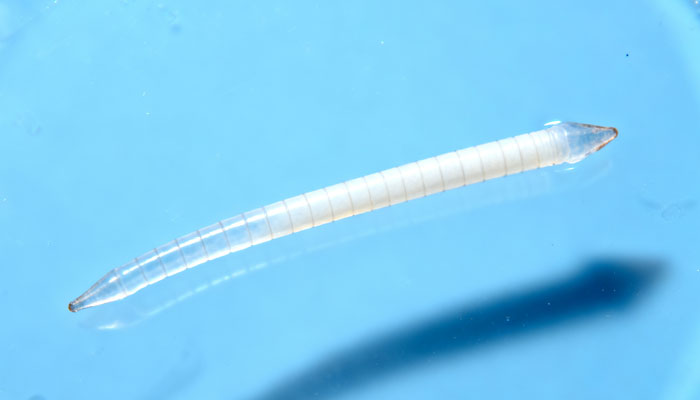The Pathology of Heartworm Disease

Heartworm disease has a wide distribution, with confirmed cases in all 48 contiguous states and Hawaii. Dogs in these regions are at risk of infection, which can lead to permanent health complications. Geographically, the southern and central regions of the United States are considered high-risk areas for infection, with the southeastern region experiencing particularly high prevalence. In contrast, infection rates are relatively lower in the northern and eastern regions, except for a few specific areas. To visually illustrate the harm heartworm causes to dogs, this article compiles multiple case studies of canine heartworm disease, providing a detailed analysis of the various pathological damages it inflicts.
1. Comparison of Normal Pulmonary Artery vs. Early Infection Stage
To clearly demonstrate heartworm damage, we first present an image of a normal pulmonary artery: it exhibits a smooth endothelial surface without any abnormal proliferation or injury. During the early stages of infection, adult heartworms spend most of their time within the pulmonary artery lumen. With each heartbeat, the worms within the lumen are agitated back and forth, directly traumatizing the delicate endothelial cells lining the pulmonary artery.
2. Development and Characteristics of Arterial Inflammation
The trauma induced by heartworms further triggers arterial inflammation. This inflammatory response causes gradual thickening of the pulmonary arterial endothelial surface, accompanied by villous hyperplasia, ultimately progressing to wrinkled arteritis. Clinical case images reveal mild early changes in the left main pulmonary artery, while the right image shows a late-stage infection with extensive wrinkled endarteritis and pulmonary artery dilatation. It is important to note that the resulting endarteritic changes are often irreversible.
3. Specific Manifestations of Pulmonary Artery Disease
Two clinical images clearly illustrate typical changes in pulmonary arteries of infected canine lung lobes:
In the left image, the proximal pulmonary artery appears relatively normal, but the distal artery exhibits severe endothelial proliferation. This proliferation restricts and disrupts normal blood flow. In the right image, the entire right caudal lobe artery and its branches exhibit irregular thickening of the endothelial surface. At the intersections of multiple smaller arterial branches, several proliferative lesions are present, with one branch already occluded due to marked fibrosis.
4. Pathogenesis of Obstructive Disease
Microscopically, heartworm infection induces fibrosis in capillaries and small arteries. However, the majority of clinical manifestations stem from obstructive disease in larger arteries. Relevant case images reveal that when large numbers of heartworms accumulate within pulmonary arteries, the mass can nearly completely obstruct the small arteries. This creates a physical blockage that reduces blood flow, impairing normal pulmonary perfusion in dogs.
5. Symptoms Caused by Embolism
Heartworms can live up to seven years, though most do not survive that long. When worms die naturally, they travel through the bloodstream to the terminal vessels, stimulating the body to form blood clots. Once a clot forms, it can partially or completely block blood flow, accompanied by a strong inflammatory response. Affected dogs exhibit symptoms such as decreased exercise tolerance, coughing, and difficulty breathing. Severe cases may progress to congestive heart failure.
6. Progression of Congestive Heart Failure
As the obstructive disease caused by heartworms progressively worsens, significant blood flow obstruction occurs in vessels including the pulmonary artery. Impaired blood flow leads to persistently elevated pulmonary artery pressure, causing right-sided cardiac dilation. In severe cases, cardiac output decreases significantly, ultimately resulting in congestive heart failure that poses a serious threat to the dog’s life.
7. Pathological Features of Cavernous Syndrome
When dogs suffer severe heartworm infection, large numbers of worms may migrate into the right heart chambers and vena cava. These worms often become entangled or knotted, directly interfering with normal tricuspid valve function. Anatomical images of the heart and major vessels from a case of caval syndrome reveal distinct heartworms visible through cross-sections of the superior and inferior vena cavae. These parasites are the primary cause of abnormal caval function.
8. Special Cases of Tricuspid Regurgitation
As worms can freely migrate within blood vessels and cardiac chambers, individual worms may enter the right ventricle and become entangled in the tricuspid valve’s chordae tendineae. This typically causes tricuspid regurgitation, leading to congestive heart failure in the right cardiac system. Notably, this form of tricuspid regurgitation can occur even in cases with low worm burdens, indicating that heartworms pose a widespread threat to cardiac valves.
admin
-
Sale!

Washable Pet Cooling Pad for Cats and Dogs
$10.99Original price was: $10.99.$9.99Current price is: $9.99. This product has multiple variants. The options may be chosen on the product page -
Sale!

Washable Cat Window Hammock Cooling Bed
$23.99Original price was: $23.99.$22.99Current price is: $22.99. -
Sale!

Tropical Amphibian Rainforest Tank, Lizard Cage
$38.99Original price was: $38.99.$36.99Current price is: $36.99. -
Sale!

Silent 4-in-1 Waterproof Charging Dog Hair Trimmer
$49.88Original price was: $49.88.$47.99Current price is: $47.99.